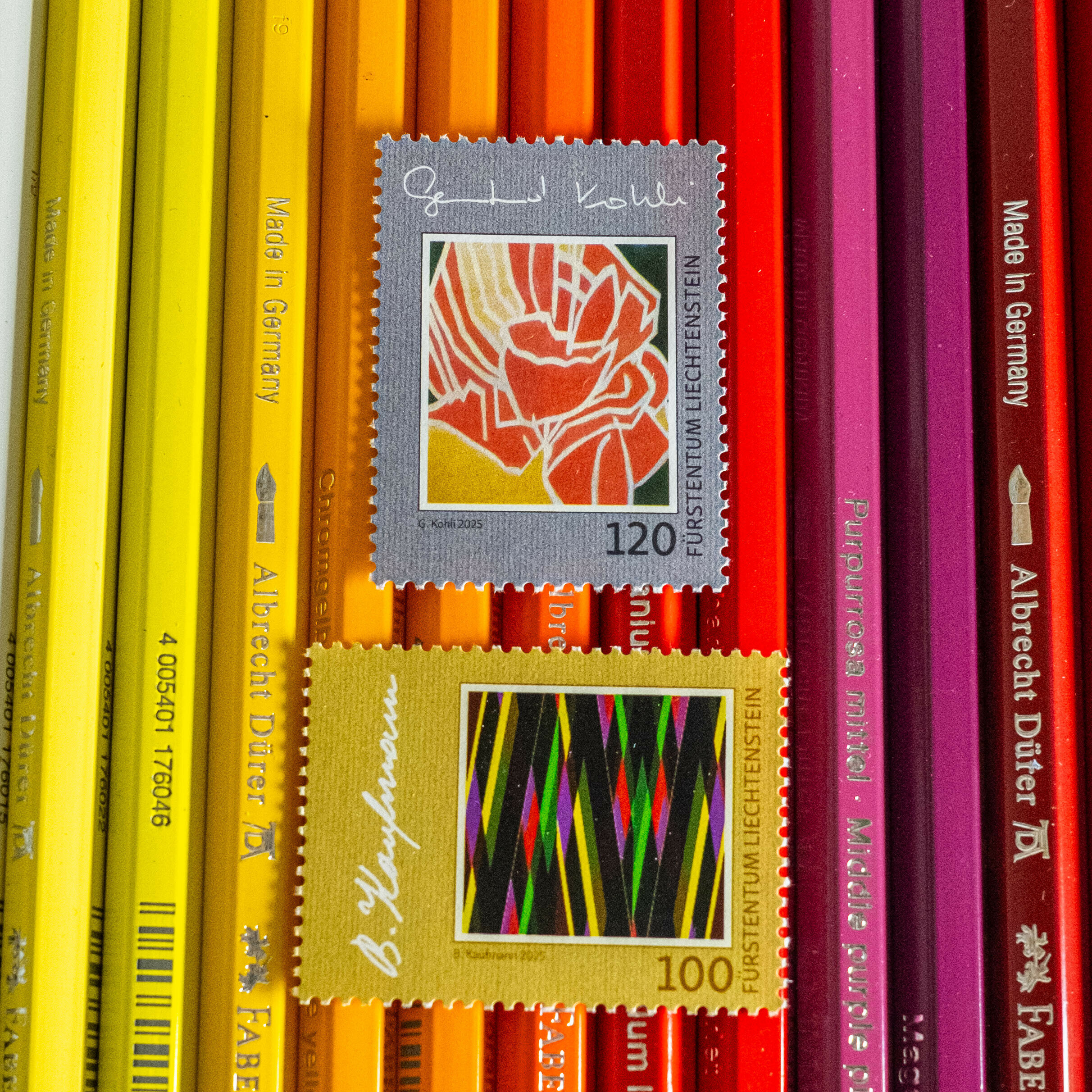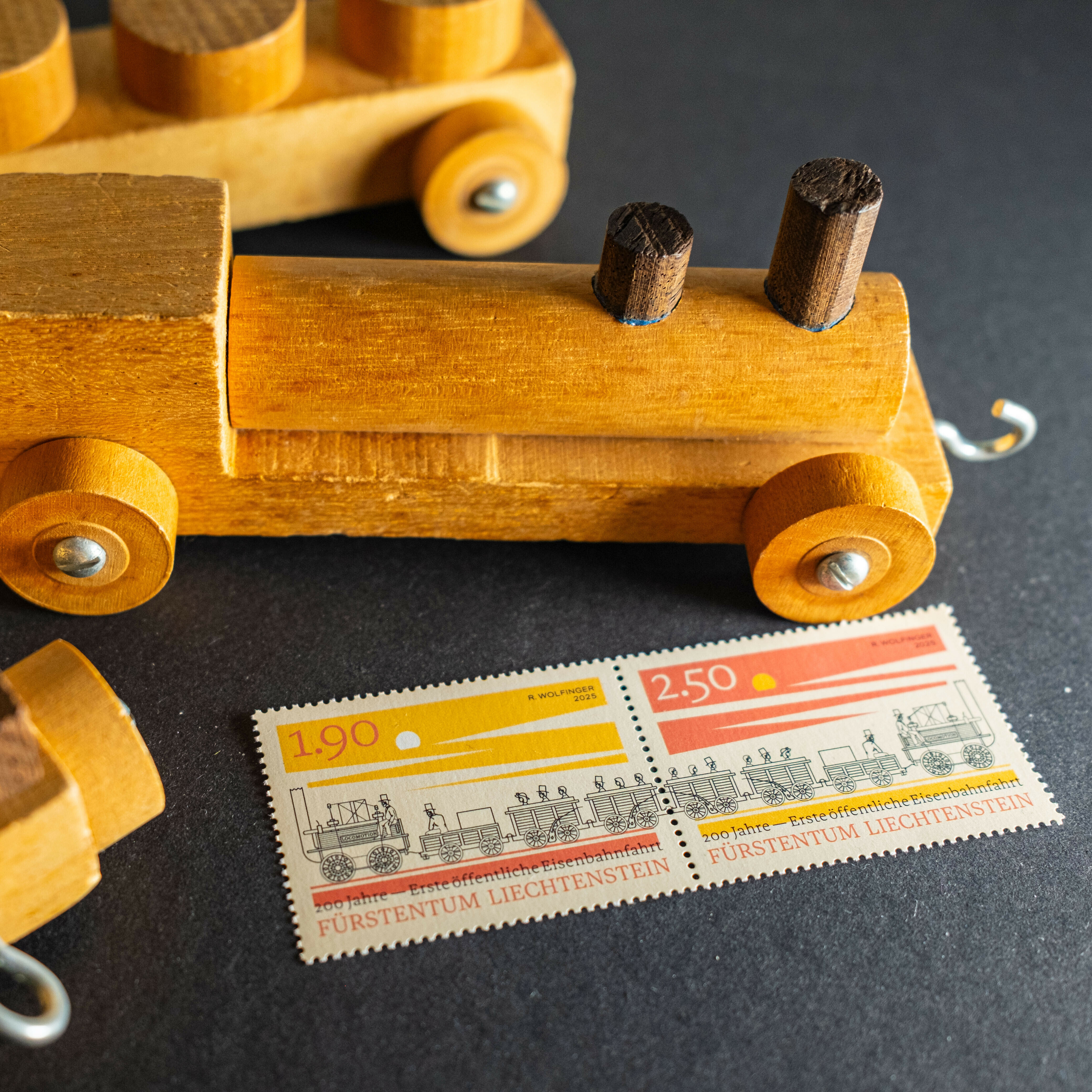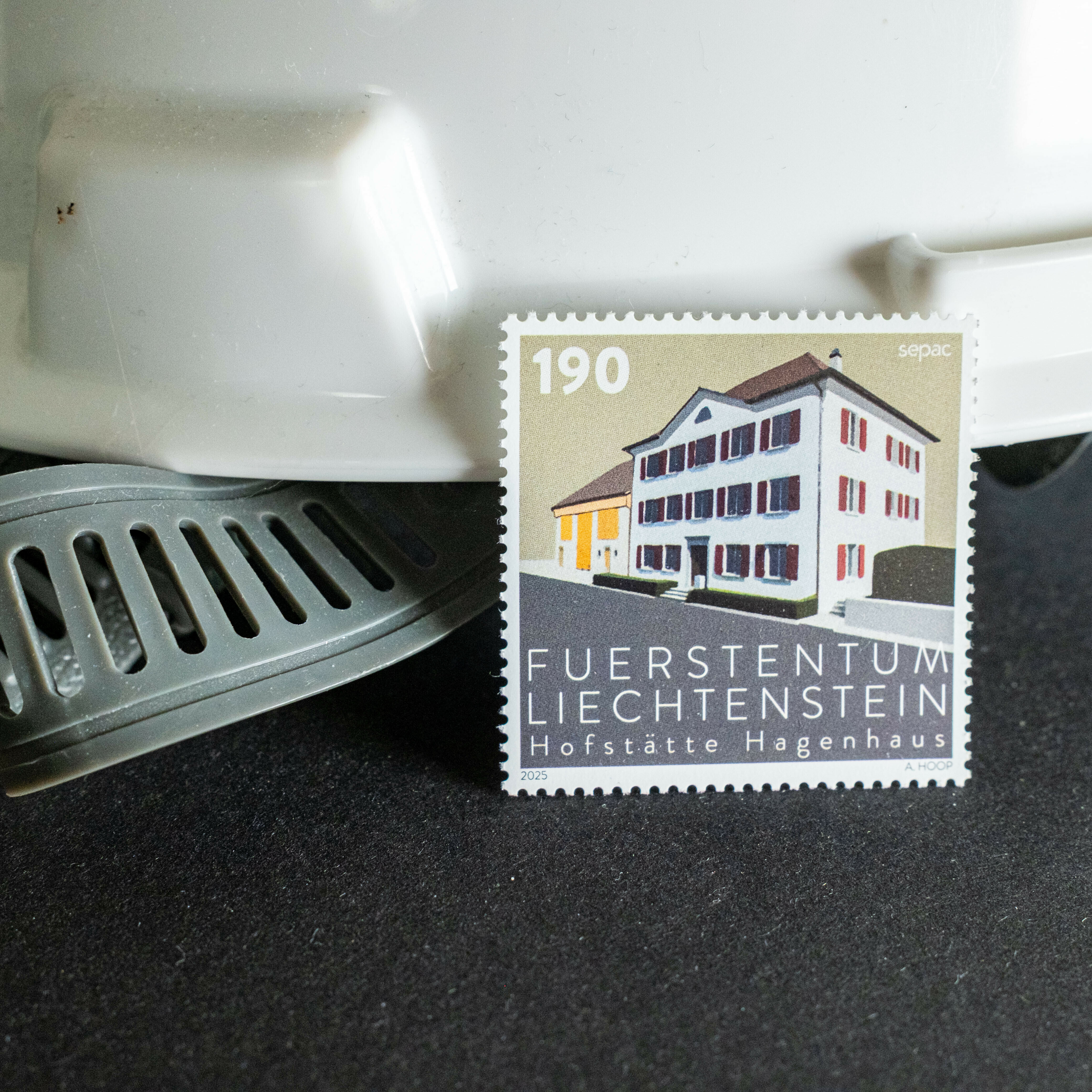Briefmarken Liechtenstein
https://www.philatelie.li/no_cache/webs … ostamp_pi1[detailUid]=502
Ôîðóì ôèëàòåëèñòîâ (Òåìàòè÷åñêàÿ ôèëàòåëèÿ è Ìèð) ÔÈËÔÎÐÓÌ |
Ïðèâåò, Ãîñòü! Âîéäèòå èëè çàðåãèñòðèðóéòåñü.
Âû çäåñü » Ôîðóì ôèëàòåëèñòîâ (Òåìàòè÷åñêàÿ ôèëàòåëèÿ è Ìèð) ÔÈËÔÎÐÓÌ » Briefmarken / Auf deutsch » Briefmarken Liechtenstein
Briefmarken Liechtenstein
https://www.philatelie.li/no_cache/webs … ostamp_pi1[detailUid]=502
Briefmarken Liechtenstein


Briefmarken Liechtenstein


Briefmarken Liechtenstein


Liechtenstein / SEPAC


Europa – Think Green


Philatelie Liechtenstein: 1. Briefmarkenausgabe des Jahres 2016
VADUZ - Die Philatelie Liechtenstein stellte am Freitag in einer Aussendung ihre neue Briefmarkenausgaben fürs Jahr 2016 vor, die am 7. März erscheinen wird

„Think Green“ lautet das diesjährige Motto der Europamarken, welche von den Mitgliedsstaaten der Organisation europäischer Postunternehmen, PostEurop, herausgegeben werden. Ein Wettbewerb unter allen teilnehmenden Postgesellschaften brachte die Marke „Von Grau zu Grün“ (Wertstufe CHF 1.50) der Zypriotin Doxia Sergidou als Siegerin hervor. Die Philatelie Liechtenstein gibt zusätzlich eine landeseigene Europamarke zum selben Thema heraus.
Die SEPAC ist ein Zusammenschluss von 14 kleinen Postgesellschaften Europas, die regelmässig Wertzeichen zu gemeinsamen Themen veröffentlichen. Gestalter Hans Peter Gassner hat die liechtensteinische SEPAC-Marke „Vier Jahreszeiten“ (Wertstufe CHF 1. 50) grafisch umgesetzt.
Kunst und Archäologie
Die Philatelie weist mit dieser Sonderausgabe einmal mehr auf die Arbeit eines einheimischen Kunstschaffenden hin: Fürstliche Musikdirektor Alois Ritter, war neben seiner Musik auch Maler.
Die mehrteilige Briefmarkenserie über archäologische Fundstücke in Liechtenstein zeigt in dieser Ausgabe drei Gebrauchsgegenstände. Eine Dolch, ein Rasiermesser und ein Lappenbeil.
Eine Dauermarkenserie mit Bäumen läutet eine Neuheit ein: Erstmals gibt Liechtenstein Wertzeichen im Kleinformat 24.75 x 27.2 Millimeter auf 40er Bogen heraus. Die Briefmarken sollen insbesondere überall dort Anwendung finden, wo viele Postsendungen frankiert werden müssen.
5. offizieller Kollektionsbogen
Zweimal jährlich erscheinen zu speziellen Anlässen die offiziellen Kollektionsbogen «dieMarke.li» Diese Bogen, welche jeweils zehn verschiedene Motive im Zusammendruck enthalten, sind ebenfalls postgültig, erscheinen komplett unabhängig und stehen in keinem Zusammenhang zu den offiziellen Briefmarkenausgaben des Fürstentums Liechtenstein.
Think Green


Briefmarken Liechtenstein



Philately Liechtenstein
50th Birthday of H.S.H. Hereditary Prince Alois von und zu Liechtenstein

To celebrate the 50th birthday of H.S.H. Hereditary Prince Alois of Liechtenstein, a classy-looking souvenir sheet is appearing in a combination of steel engraving and offset print with the three stamps “Green Princely Hat” (face value: CHF 1.30), “H.S.H. Hereditary Prince Alois of Liechtenstein” (face value: CHF 2.20) and “Red Princely Hat” (face value: CHF 2.80). Hereditary Prince Alois was born on 11 June 1968 as the eldest son of Prince Hans-Adam II and Princess Marie. He attended primary school and grammar school in Vaduz. He then entered the Royal Military Academy Sandhurst (UK) where he completed training as an officer. After serving in the Coldstream Guards in Hong Kong and London, Hereditary Prince Alois enrolled as a student of Law at Salzburg University and after completing his university studies, he worked for an auditing firm in London. He has been living at Vaduz Castle again since 1996 and works for various areas involving the princely assets. The Hereditary Prince married Duchess Sophie in Bavaria in 1993 and they have four children. In 2004, Prince Hans-Adam II appointed the Hereditary Prince as his deputy. Since that time H.S.H. Hereditary Prince Alois has been performing tasks as head of state of the Principality of Liechtenstein at both national and international level.
Summit Crosses – II

Four special stamps with photos by Marco Nescher depict breathtaking views of Liechtenstein’s mountain landscape. The first part of the series “Summit Crosses” appeared in 2009 to commemorate 100 years of the Liechtenstein Alpine Club and was extremely well received. The current four peaks also give a vague idea of just how impressive the alpine world of the small state is.
To the north-west of Sass, the two rock columns that form the “Kelchle” (fact value: CHF 1.00) rise to 1'914 metres above sea level. The rock formation has a magical appeal for climbers and is often referred to as Liechtenstein’s sugar loaf in the winter when it is snow-capped. The “Mittlerspitz” (face value: CHF 2.00) owes its name to its position between Mittagsspitz and Rotspitz, when seen from Triesen. The “Hubel” (face value: CHF 2.60), also called Silberhorn, is a mountain ridge located in the high valley of Malbun. The folded layers of rock at “Kläusli” (fact value: CHF 1.50) similarly present a fascinating sight. The stamp with the summit rising to a height of 2'585 metres above sea level also serves as Liechtenstein’s SEPAC stamp this year. SEPAC, an association of 13 small postal administrations in Europe, issues stamps on common themes every year, the theme this year being “Spectacular views”.
Nature Reserves in Liechtenstein: Hälos

With a fourth and last part, Philately Liechtenstein is completing its popular special stamp series on nature reserves in Liechtenstein. The motifs captured by Dietmar Walser and Johannes Frigg in the area of Hälos in Triesen were submitted to the highly popular photo competition organised by the Fotoclub Spectral and selected from there. Both panoramic views were split down the middle, producing four stamps. They show the pond landscape in the “Spring” (left and right, face value: CHF 1.00 each) and in the “Summer” (left and right, face value: CHF 1.00). The stamps were refined with silver foil embossing and are shown twice each on one 8-stamp sheetlet. Hälos in Triesen is the largest continuous pond landscape in Liechtenstein and thus a valuable wetland with open water areas with different depths, many different forms of pond edges and semi-natural forests. The area is considered an important resting place for the grey heron and a brooding place and habitat for many other bird species. Besides being an important spawning ground for amphibians, this has again served as a home to beavers since 2012.
100 Years of Direct Suffrage


One century ago, the country of Liechtenstein introduced direct suffrage. Prior to 1918, foreign heads of government governed the country with national administrators and the Landtag, Liechtenstein’s parliament, was composed of indirectly elected members and members appointed by the reigning princes. The catalyst for the changes was the emerging democratic spirit after the First World War. The people called for a democratic constitution to be drawn up, for participation in government and for the direct election of members of the Landtag. Through the new constitution which entered into force in 1921, the country was given the form of government that it still has today – a constitutional, hereditary monarchy on a democratic, parliamentary basis. Since that time, many state functions can only be exercised if various state authorities cooperate. By introducing the direct electoral system in 1918, an important step was not only taken towards increasing the political rights of the people, the doors were also opened to the formation of political parties.
Through the stamp “100 Years of Direct Suffrage” (face value: CHF 1.00) by Hans Peter Gassner, Philately Liechtenstein is commemorating this memorable occasion.
Europa – Bridges

Crop Plants: Vegetables

The self-adhesive definitive stamps with motifs taken from nature have been highly popular for years. The current issue shows four popular vegetables. The “Aubergine” (face value: CHF 0.85) is used particularly in the Mediterranean, oriental and Turkish cuisine where it attained fame through several special dishes such as moussaka. Cut into slices or grated into thin strips, the bulbs of the “Radish” (face value: CHF 1.00) are eaten raw. They can be added to salads or used in sandwiches. The “Courgette”, otherwise known as “zucchini” (face value: CHF 1.50), is a subspecies of the vegetable marrow. Courgettes are eaten raw, boiled, grilled or fried. Their large yellow blossom is also fit for human consumption and considered a delicacy. The classical hot pepper, known as “peperoni” in these parts (face value: CHF 2.00), can also be prepared in many different ways. It originally comes from South America and is available in many different colours. One third of Liechtenstein’s territory is used for agricultural purposes. In addition to dairy and meat production, field crops, vegetables and grapes are grown.
Trades and Crafts – II

The series called into being in 2017 on the theme of trades and crafts as a SEPAC stamp is now featuring a second and last part. Graphic artist René Wolfinger chose to graphically represent the three motifs with pictograms and placed these on different coloured backgrounds. A common feature on each special stamp is a stylised hand to symbolise the theme of trades and crafts. The “Bookbinder” trade (face value: CHF 1.00) has been a widespread handicraft since the Middle Ages. Hand binding, gold coating, cutting and pressing are techniques that were done manually in the past with the aid of various tools. An “Instrument Maker” (face value: CHF 1.30) must also have skilful hands because in the end the customer frequently wants a perfectly tuned instrument. His daily tasks include sawing, planing and soldering. The tools required to make shoes, such as a hammer, knife and pliers, have hardly changed for centuries. However, today’s “shoemaker” (face value: CHF 1.80) also has access to efficient machinery.
100. Todestag Gustav Klimt


Riesen-Panne: Falscher Beck auf der Marke
Am 4. März 2019 bringt die Philatelie Liechtenstein eine neue Briefmarken-Serie heraus. Eine Marke würdigt das Jubiläum «100 Jahre Aussenpolitische Vertretung Liechtensteins». Dabei passierte ein peinlicher Fehler: Anstatt dem Portrait von Emil Beck, dem ersten Gesandten in Bern, prangt das Foto des Volkspartei-Gründers Wilhelm Beck auf der Briefmarke.
In der Beschreibung zur Briefmarke heisst es: «Die Sondermarke "Wien und Bern" (Wertstufe CHF 2.20) thematisiert die 1919 erstmals eingerichteten diplomatischen Vertretungen Liechtensteins in der Schweiz und in Österreich.Der Jurist Emil Beck (1888-1973) war bis 1933 Geschäftsträger der liechtensteinischen Gesandtschaft in Bern. Er wirkte an verschiedenen Staatsvertragsverhandlungen beider Länder mit. Die Aufhebung der Vertretung in der Schweiz war gemäss Landtagsprotokoll auf die finanzielle Lage des Landes zurückzuführen.» Rechts auf der Briefmarke ist Prinz Eduard von Liechtenstein (1872 - 1951) zu sehen, welcher Liechtensteins Interessen von 1919 bis 1921 als Gesandter in Wien vertrat.
Doch Emil Beck ist auf der Briefmarke nicht zu sehen. Stattdessen das wohl bekannteste Foto des Volkspartei-Gründers Wilhelm Beck. Wie dieser Fehler passieren konnte, ist unerklärlich, da die Briefmarken doch mehrere Kontrollen überstehen müssen.
Wie Stefan Erne, Leiter Philatelie Liechtenstein, gegenüber dem «Vaterland» erklärte, wird die gesamte Auflage von 56 000 Stück eingestampft. Die richtigen Marken würden die nächste Woche gedruckt. Als Begründung gab er an, dass mehreren Gremien die Verwechslung nicht aufgefallen sei, da Emil und Wilhelm Beck in der gleichen Zeit aktiv waren.
In der am Abend versandten Medienmitteilung der Liechtensteinischen Post AG heisst es: «Trotz der fehlerhaften Abbildung in der Broschüre kann festgehalten werden, dass keine falschen Briefmarkendrucke in den Umlauf geraten sind und dadurch auch der Liechtensteinischen Post AG kein Schaden entstanden ist. Die Philatelie der Liechtensteinischen Post AG entschuldigt sich für dieses Missgeschick beim Druck der Broschüre.» (sap)
Jahr des Schweins 2019 - Scherenschnitt Großbogen postfrisch, Liechtenstein


Bildende Kunst aus Liechtenstein
Im Rahmen unserer Reihe «Bildende Kunst aus Liechtenstein» rücken wir auch dieses Jahr zwei Kunstschaffende und ihre Lebenswerke ins Rampenlicht. Die Sondermarken zeigen Bilder von «Bruno Kaufmann» (Wertstufe CHF 1.00) und «Gertrud Kohli» (Wertstufe 1.20).
Bruno Kaufmanns (*1944) Werk «Diaphan A4» entstand in der Diaphan-Technik als Digitaldruck auf Leinwand. Im Mittelpunkt des Schaffens steht das kreative Vorgehen durch rationale Form-Farbe-Setzungen und das spielerische Erkunden von neuen Zwischenfarben.
Für den Künstler ist der Computer dafür das ideale Werkzeug, Ideen zu entwickeln und in für ihn unbekannte Sphären vorzudringen.
Gertrud Kohlis (*1945) Werk «Rose» ist 1994 als Acrylgemälde (125 x 110 x 3 cm) auf Holz entstanden.


Die Rose setzt gleich doppelt Akzente: Sie blüht für den Menschen als existentielle Erfahrung, leuchtend und mit bezauberndem Duft im Garten des Lebens, aber als Sinnbild für das Leben, auch mit Dornen. Gleichzeitig ist sie ein Holzgewächs, eine Zierde am Apfelbaum und bringt eine Frucht hervor. Die «Rose» wird so zu der Übersetzung zwischen der Natur und den Betrachtern.
200 Jahre erste öffentliche Eisenbahnfahrt
Die Geschichte der öffentlichen Eisenbahnfahrt begann 1825 zwischen den Städtchen Stockton und Darlington in England: Am 27. September 1825 fuhr erstmals eine Dampflokomotive mit 36 angehängten Waggons und der Höchstgeschwindigkeit von 24 km/h durch die englische Landschaft.
Neben vielen Zuschauern am Streckenrand liessen sich auch knapp 600 Passagiere dieses Ereignis nicht entgehen. Komfortabel war das aber nicht unbedingt – die Reisenden sassen und standen zum Teil auf den mit Kohle beladenen Waggons.
Die 39 Kilometer lange Fahrt war der Beginn des modernen Schienenverkehrs und revolutionierte Reisen und Handel. Die Wertzeichen «Hinreise bei Sonnenaufgang» (Wertstufe CHF 1.90) und «Rückreise im Abendrot» (Wertstufe 2.50) erinnern an das historische Ereignis.
In Liechtenstein führt seit 1872 eine einzige, knapp neun Kilometer lange Eisenbahnstrecke einspurig durch das Fürstentum. Sie ist Teil der Verbindung von Feldkirch (Österreich), über Schaan (Liechtenstein) nach Buchs (Schweiz) und wird von den drei Ländern gemeinsam betrieben.


SEPAC – Architektur Hagenhaus
Das Hagenhaus ist eine im liechtensteinischen Weiler Nendeln gelegene Hofstätte aus dem 19. Jahrhundert. Der Gebäudekomplex steht seit 1988 unter Denkmalschutz und ist die wohl am besten erhaltene Hofanlage in Liechtenstein aus der ersten Hälfte des 19. Jahrhunderts.
Wo es heute prominent an einer der verkehrsreichsten Strassen im Fürstentum liegt, war das Hagenhaus im 19. Jahrhundert Teil der historischen Poststrecke Lindau – Mailand.
Das Hagenhaus wurde 1837 durch den Vaduzer Baumeister Joseph Anton Seger errichtet und als kombiniertes Wohn- und Geschäftshaus mit angeschlossenen landwirtschaftlichen Wirtschaftsgebäuden von zwei Familien genutzt. Es enthielt ab 1864 die erste k.u.k. Poststation im Liechtensteiner Unterland. Bauherr war Josef Alois Schlegel, der auch gleich selbst als Posthalter fungierte. Die Poststation bestand bis 1912.
Unsere Sondermarke «K&K-Postexpeditionsstelle 1864-1912» (Wertstufe CHF 1.90) ist der Beitrag Liechtensteins für die diesjährige SEPAC-Ausgabe. Der Zusammenschluss der zwölf kleinsten Postgesellschaften Europas gibt jedes Jahr ein Wertzeichen zu einem gemeinsamen Thema heraus, 2025 zum Thema «Architektur».


Âû çäåñü » Ôîðóì ôèëàòåëèñòîâ (Òåìàòè÷åñêàÿ ôèëàòåëèÿ è Ìèð) ÔÈËÔÎÐÓÌ » Briefmarken / Auf deutsch » Briefmarken Liechtenstein